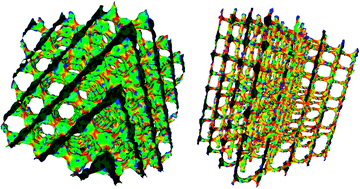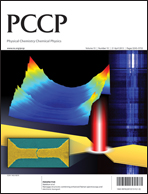Quantification of the confinement effect in microporous materials†
Abstract
The confinement effect plays a key role in physisorption in microporous materials and many other systems. Confinement is related to the relationship between the pore geometry (pore size and topology) and the geometry of the adsorbed molecule. Geometric properties of the porous solid can be described using the concepts of Gaussian and mean curvatures. In this work we show that the Gaussian and mean curvatures are suited descriptors for mathematically quantifying the confinement of small molecules in porous solids. A method to determine these geometric parameters on microporous materials is presented. The new methodology is based on the reconstruction of the solid's accessible surface. Then, a numerical calculation of the Gaussian and mean curvatures is carried out over the reconstructed mesh. On the one hand, we show that the local curvature can be used to identify the most favourable


 Please wait while we load your content...
Please wait while we load your content...